|
Books Should Be Free Loyal Books Free Public Domain Audiobooks & eBook Downloads |
|
|
Books Should Be Free Loyal Books Free Public Domain Audiobooks & eBook Downloads |
|
Fiction |
|---|
|
Book type:
Sort by:
View by:
|
By: U. Waldo Cutler | |
|---|---|
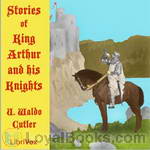 Stories of King Arthur and His Knights
Stories of King Arthur and His Knights
Stories of King Arthur and His Knights. Retold from Malory’s “Morte dArthur”. | |
By: United States Arms Control and Disarmament Agency | |
|---|---|
 Worldwide Effects of Nuclear War: Some Perspectives
Worldwide Effects of Nuclear War: Some Perspectives
This is a concise yet thorough explanation of what might happen to our world in the aftermath of a nuclear war. The myriad of potential effects will be global and wide-spread, and the potentials are glazed over in this short work. | |
By: Unknown | |
|---|---|
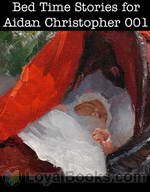 Bed Time Stories for Aidan Christopher
Bed Time Stories for Aidan Christopher
Bed Time Stories is a collection of 14 short stories especially for young children. | |
 African-American Collection, July 2007
African-American Collection, July 2007
This collection recognizes Black History Month, February 2007. Two excellent resources for public domain African American writing are African American Writers (Bookshelf) and The Book of American Negro Poetry, edited by James Weldon Johnson. Johnson’s collection inspired the Harlem Renaissance generation to establish a firm African-American literary tradition in the United States. | |
 The Good Housekeeping Marriage Book
The Good Housekeeping Marriage Book
A collection of articles from Good Housekeeping magazine, The Good Housekeeping Marriage Book focuses on the subject of marriage. With instructions and advice from courtship to raising children, this collection aims to assist those with questions and concerns surrounding marriage and the ensuing relationship. Published in 1938. | |
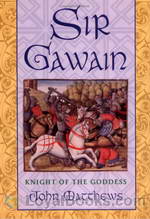 Sir Gawain and the Green Knight
Sir Gawain and the Green Knight
Sir Gawain and the Green Knight is a late 14th Century Middle English alliterative romance outlining an adventure of Sir Gawain, a knight of King Arthur’s Round Table. In the tale, Sir Gawain accepts a challenge from a mysterious warrior who is completely green, from his clothes and hair to his beard and skin. The “Green Knight” offers to allow anyone to strike him with his axe if the challenger will take a return blow in a year and a day. Gawain accepts, and beheads him in one blow, only to have the Green Knight stand up, pick up his head, and remind Gawain to meet him at the appointed time... | |
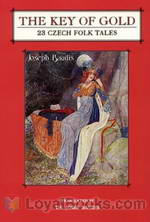 The Key of Gold: 23 Czech Folk Tales
The Key of Gold: 23 Czech Folk Tales
Not your common fairy tales, this collection is a mixture of morals, quirkiness, and sarcasm. In it one finds ironic derivatives (if not roots) of well known fairy tales such as “The Brave Little Taylor” and “Beauty and the Beast,” as well as some more unusual settings to impart the popular fairy tale themes of justice and happily ever after. Most stories are told with wry humor and often shocking irreverence for the expected fairy tale turn out. This is NOT a book for children, but one for adults who love fairy tales, and enjoy making fun of them... | |
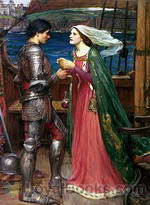 An Arthurian Miscellany
An Arthurian Miscellany
A collection of works that explore the rich and evocative legend of King Arthur. The exploits of Arthur and his Knights of the Round Table have been a staple of British literature through the centuries, drawing together themes of pagan wizardry, the search for the Holy Grail, chivalry and of course romance. | |
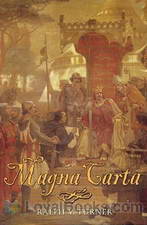 Magna Carta
Magna Carta
The original document is in Latin so this can only be a fairly rough approximation of the actual content. The text used is the first version in the Gutenberg collection. – Magna Carta is the most significant early influence on the long historical process that has led to the rule of constitutional law today. Magna Carta was originally created because of disagreements between the Pope, King John and his English barons over the rights of the King. Magna Carta required the king to renounce certain rights and respect certain legal procedures and to accept that the will of the king could be bound by law. | |
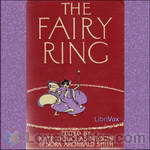 The Fairy Ring
The Fairy Ring
The Fairy Ring, originally published in 1910, is a collection of 63 fairy tales from around the globe. It includes such well-known favorites as “History of Jack the Giant-Killer,” “The Frog Prince,”"Rumpel-stilts-ken,” and “Snow-white and Rose-red,” among many others. Children of all ages will enjoy these stories. | |
 Grandma Janice's Poems and Stories
Grandma Janice's Poems and Stories
The poems and stories in this collection were selected with the reader’s grandchildren in mind. “The Raggedy Man” and “Little Orphant Annie,” both by James Whitcomb Riley, the Hoosier Poet were favorites of the reader when she was a child on a farm in Indiana. Other favorites were picked up along the way as she read to her own daughter and to her students, while other gems were discovered while looking for poems and stories to include in this collection. It is hoped that this collection will bless the hearts of many children and parents alike as they listen together. | |
 The String of Pearls
The String of Pearls
The tale of Sweeney Todd has had many incarnations, most famously the stage and movie musical by Stephen Sondheim. But it all started in 1846 with a serialized telling of the story titled “The String of Pearls” in the weekly magazine “The People’s Periodical and Family Library”. Called by some a romance, by others a horror story, it is one of the earliest murder mysteries. In “The String of Pearls”, Sweeney Todd is less sympathetic than in some of his later incarnations – a perfect villain, totally self-seeking with no redeeming qualities... | |
 James Joyce in Context: Telemachus
James Joyce in Context: Telemachus
Collection of various works which James Joyce quotes and references to in his epic novel Ulysses, and provides them in audio form. Perfect for Joyce scholars, fans, and aficionados! | |
 Young Adult Short Works Collection
Young Adult Short Works Collection
Young Adults Short Story Collection: a collection of 9 short works of Young Adult fiction in the public domain. | |
 Eighteenth Century Poetry and Prose Collection
Eighteenth Century Poetry and Prose Collection
A collection of 48 prose and poetry selections written principally in the 18th Century. These works of world literature are written in the English language or are in English translation. | |
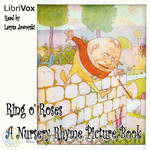 Ring o' Roses: A Nursery Rhyme Picture Book
Ring o' Roses: A Nursery Rhyme Picture Book
A collection of Classical children’s nursery rhymes. Many familiar, a few unfamiliar, all simple and easy for younger children. | |
 The House that Jack Built
The House that Jack Built
“The House that Jack Built” is a standard of juvenile literature that delights children and adults alike with the increasingly lengthy sentences, stretched to the breaking point, that make up its narrative. Through a chain of events, beginning with a rodent eating some grain and culminating in a festive wedding, children learn that playing with grammar can be fun! You can read along with this recording. | |
 Insomnia Collection
Insomnia Collection
Soporific dullness is in the ear of the listener, and what’s tedium incarnate to one person will be another person’s passion and delight. However, it is hoped that at least one from the range of topics here presented will lull the busy mind to a state of sweet sleep. Introduction by Cori Samuel. | |
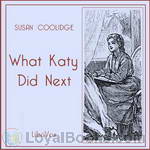 What Katy Did Next
What Katy Did Next
This is the third book of the famous “What Katy did” series. | |
 The Keepsake
The Keepsake
“The Keepsake, or, Poems and Pictures For Childhood and Youth”, is a collection of twenty pastoral poems published as one collection in London, 1818. The topics are moral encouragement for children, young and old alike. | |
 The Mabinogion
The Mabinogion
Sample a moment of magic realism from the Red Book of Hergest: On one side of the river he saw a flock of white sheep, and on the other a flock of black sheep. And whenever one of the white sheep bleated, one of the black sheep would cross over, and become white; and when one of the black sheep bleated, one of the white sheep would cross over, and become black. Before passing on to the Mabinogion proper, Lady Charlotte Guest devotes Volume I of her compilation of medieval Welsh tales to three brief romances of Arthur’s Court... | |
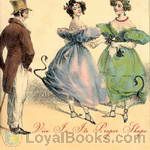 Vice in its Proper Shape
Vice in its Proper Shape
Cautionary tales of the transmigration of the souls of naughty boys and girls, as elucidated by the mysterious Bramin, Mr Wiseman: “Having been gifted with the faculty of distinguishing those animals which are now animated by the souls of such human beings as formerly degraded themselves to a level with the unthinking brutes, I have taken the pains to provide a collection of beasts, birds, &c. most of which are inhabited by the souls of some naughty masters or misses, who died in the neighbourhood.” (David Barnes, quoting the Introduction) | |
 Lords of the Housetops: Thirteen Cat Tales
Lords of the Housetops: Thirteen Cat Tales
The Lords of the Housetops reveals the cat through the creative lenses of 13 authors. Consequently, this carefully chosen collection of stories is as complex, charismatic and clever as a cat. | |
 Oscar Wilde: Art and Morality. A Defence of The Picture of Dorian Gray
Oscar Wilde: Art and Morality. A Defence of The Picture of Dorian Gray
“Who can help laughing when an ordinary journalist seriously proposes to limit the subject-matter at the disposal of the artist?” “We are dominated by journalism…. Journalism governs for ever and ever.” One of the nastiest of the British tabloids was founded a year too late to join in the moral panic generated to accompany Oscar Wilde’s court appearances in 1895. Yet there was no shortage of hypocritical journalists posing as moral arbiters to the nation, then as now. This compendium... | |
 The Lock and Key Library
The Lock and Key Library
A collection of classic mystery and detective stories, collected and edited by Julian Hawthorne. Note: the second chapter of Dickens’ The Haunted House is not included in this edition. | |
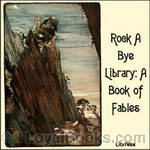 Rock A Bye Library: A Book of Fables
Rock A Bye Library: A Book of Fables
A book of short fables with morals. | |
 British & American Periodical Articles 1852-1905
British & American Periodical Articles 1852-1905
A dozen assorted articles from British and American periodicals, including The Atlantic Monthly, Punch, The Chicago Record-Herald, Chambers’s Edinburgh Journal, Lippincott’s Magazine of Popular Literature and Science, The Library, St. Nicholas, American Missionary, The Great Events by Famous Historians, and The Continental Monthly. | |
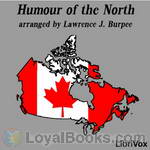 Humour of the North
Humour of the North
Some day an enterprising editor may find time to glean from the whole field of Canadian literature a representative collection of wit and humour. . . . The present little collection obviously makes no such ambitious claim. It embraces, however, what are believed to be representative examples of the work of some of our better-known writers, many of which will no doubt be quite familiar to Canadian readers, but perhaps none the less welcome on that account. | |
 The Drama: A Quarterly Review
The Drama: A Quarterly Review
This is a collection of theatrical essays from the American quarterly The Drama, including six non-fiction works -- 3 profiles: Schnitzler, Andreyev, and O'Neill, and 3 articles: Characterization vs Situation, The Actor in England, & The Evolution of The Actor. | |
 Reginald in Russia and other sketches
Reginald in Russia and other sketches
Reginald in Russia is the title story in a collection of fifteen witty and satirical stories, sketches and one "playlet" by that master of the short story H. H. Munro, better Known as Saki. The stories are: Reginald in Russia -- The Reticence of Lady Anne -- The Lost Sanjak -- The Sex That Doesn't Shop -- The Blood-feud of Toad-Water -- A Young Turkish Catastrophe -- Judkin of the Parcels -- Gabriel-Ernest -- The Saint and the Goblin -- The Soul of Laploshka -- The Bag -- The Strategist -- Cross Currents -- The Baker's Dozen (A Playlet) -- The Mouse. | |
By: Upton Sinclair (1878-1968) | |
|---|---|
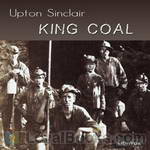 King Coal
King Coal
King Coal is a book by Upton Sinclair, first published in 1917, that exposes the dirty working conditions in the coal mining industry in the western United States during the 1910s. As in an earlier work, The Jungle, Sinclair expresses his socialist viewpoints from the perspective of a single protagonist, Hal Warner, caught up in the schemes and plots of the oppressive American capitalist system. The book itself is based on the 1914-1915 Colorado coal strikes.Reader’s note: In Book 4, there is no chapter numbered Section 16 in the public domain Gutenberg e-text. However, no actual text from the book appears to be missing. | |
 A Prisoner of Morro
A Prisoner of Morro
Upton Sinclair, born in 1878 was a Pulitzer Prize-winning American author. He wrote over 90 books in many genres. Best known for his muckraking novel, The Jungle, Sinclair also wrote adventure fiction. Many of these works were written under the pseudonym, Ensign Clark Fitch, U.S.N. A Prisoner of Morrow, published in 1898 when Sinclair was but 20 years old, is one of these efforts. The period for this work is the ten-week Spanish–American War which occurred in 1898. Revolts against Spanish rule had been prevalent for decades in Cuba and were closely watched by Americans... | |